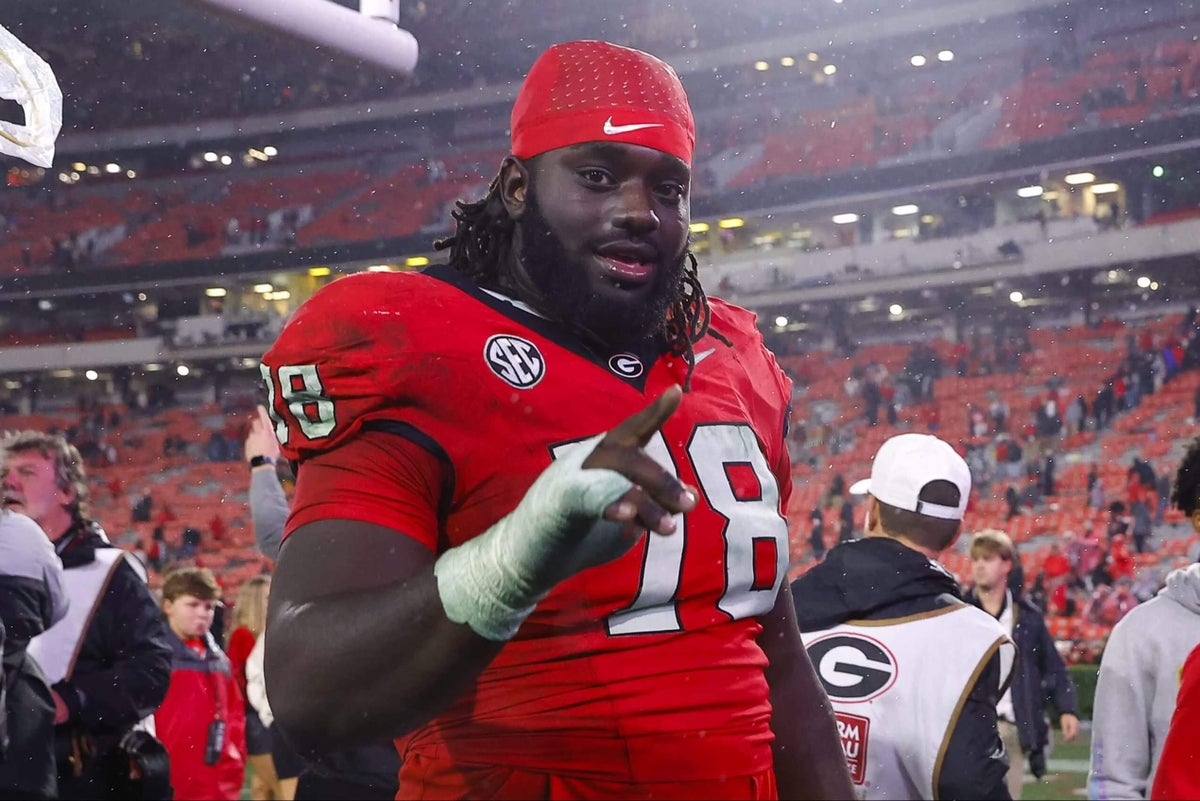ATHENS, Ga. — They were the most tense, most exciting moments of the Georgia football season, arguably the most exciting in the entire college football season: an epic game against Georgia Tech that stretched to eight overtimes and well past midnight. And as Nazir Stackhouse stood on the sideline, he was fighting an internal battle.
Stay awake, he kept telling himself. Somebody score and end this. Stay awake. Don’t fall asleep.
That’s what happened a few years before at Tennessee. The Georgia offense was on a long drive, and Stackhouse, a nose tackle, was on the bench with the rest of the defensive linemen.
“I’m on the bench fighting sleep, fighting it,” Stackhouse said.
Then, like it so often happens, bam. He was out.
Stackhouse was diagnosed with narcolepsy during his first year at Georgia. During his career, he started 42 games and won two national championships. Now he’s an NFL draft prospect, while still dealing with the condition on an everyday — or every minute — basis.
For one thing, Stackhouse rarely drives. He has a license but always has someone in the car with him and keeps the drives short. He never falls asleep when he’s on the field during game action, whether it be a game or practice. He did fall asleep during meetings, but coaches would work with him; Kirby Smart was known to lean over to tap Stackhouse: “Right, Nazir? Right?”
One area scout said that it “sounds like he has a handle on it, so I wouldn’t call it a red flag or anything.”
Stackhouse talks about the condition freely, how suddenly it hits, and can’t help but laugh at some of those times. He once slept while on a treadmill. He felt it coming on, so he grabbed the handrails, then the next thing he knew he woke back up.
“And I’m like, ‘Damn, how long was I out?’ I look down. I was down there for like 12 minutes,” Stackhouse said.
Narcolepsy symptoms usually begin between the ages of 7 and 25 and often are misdiagnosed, according to the National Institutes of Health. The exact cause is unknown, there is no cure, and the condition will be lifelong. It is a rare condition, estimated to be found in about .002 percent of the U.S. population. But some of the symptoms can be managed with a combination of medications and lifestyle changes, according to the NIH.
That Stackhouse is an athlete helps. The NIH says daily exercise of at least 20 minutes improves nighttime sleep quality and reduces “excessive daytime sleepiness.” Eating healthy helps too, so access to Georgia’s training table during the past few years has been beneficial.
Source link




